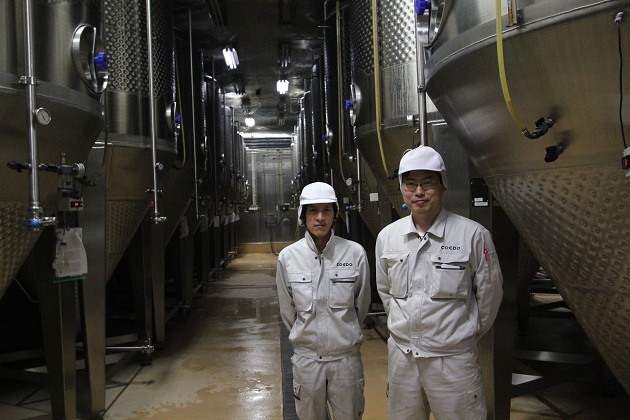
Factory tour of COEDO Beer
COEDO's factory is located in Saitama, approximately 10 minutes away from the Tsuruse station. The exterior of the factory has a European style and it appeared smaller than I expected for a factory producing for the global market beer.
We began the tour with the CEO of COEDO Mr. Asagiri, handing us a white robe to enter the factory with a hat and rubber boots. COEDO takes hygiene care very seriously as well as constant sanitation and consistant maintenance of a bacteria-free factory. In addition, Prior to the interview we were advised not to take any fermented food. Lastly, cleaning our hands with soap and water, and now, its time to explore the beer factory!
When we entered the section there was where they store the wheat and convert, you were able to feel the strong hot air in the room.
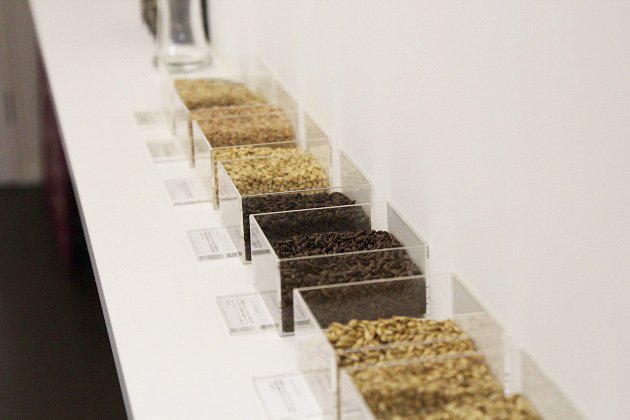
One of the machines maintains 100 degrees for the converting process. Mr. Asagiri showed us the different types of wheat.
One type of wheat was crunchy and with a hint of sweetness.
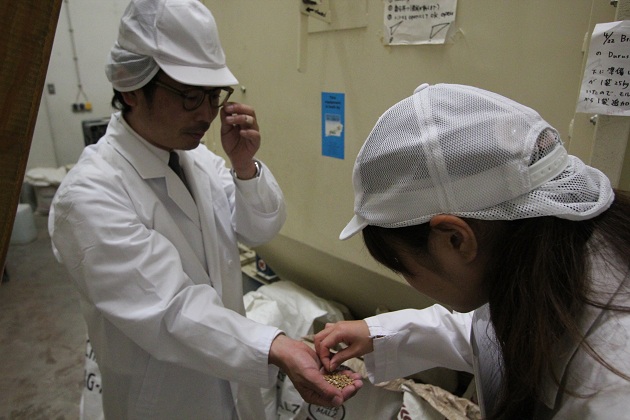
Other types of malt were dry and well cooked with a black color. Mr. Asagiri shared each type of malt and taught me that each type of malt creates the different flavor of beer.
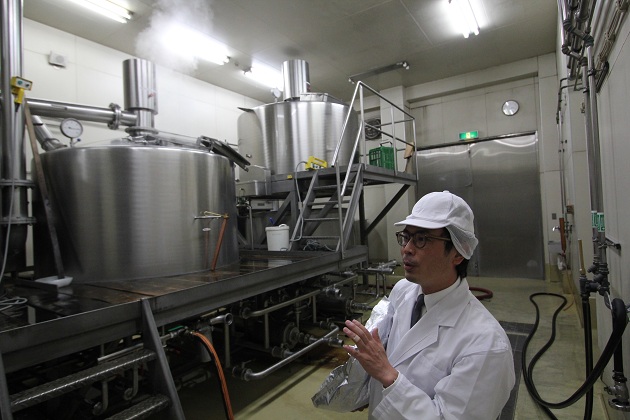
Brewing process begins with converting malt, mixing with water with heat.
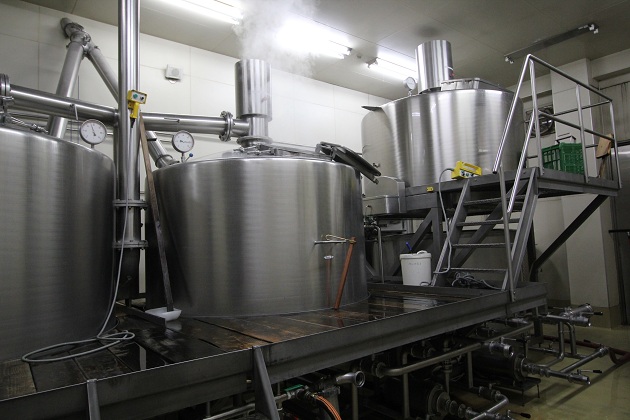
Mr. Asagiri let us tried the beer from the tank that were heated to 100 degrees. At this stage there wasn't much bitterness evident, but already has a little smell of beer.
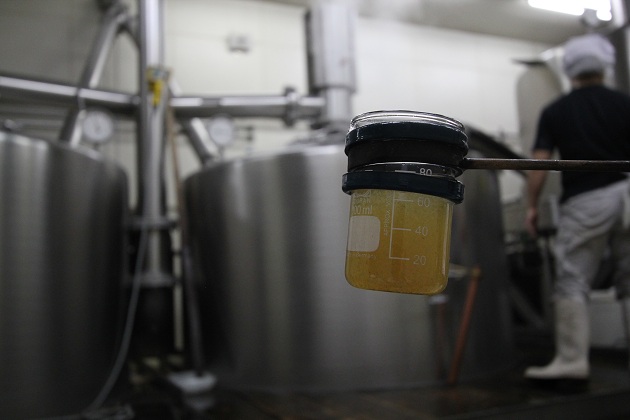
There are currently 8 beer brewers working at COEDO factory two of which are women. Later on we were introduced to move to next section, which was much colder.
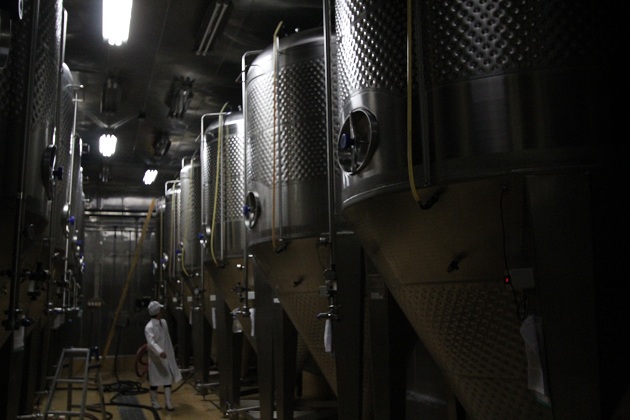
The room was set to 3 degrees. This is where they store the beer and the fermentation process takes place. Each beer requires different times of fermenting and looked after by each brewer. Constant observation is taken under this factory to create great quality beer. This process takes around 1-3 months.
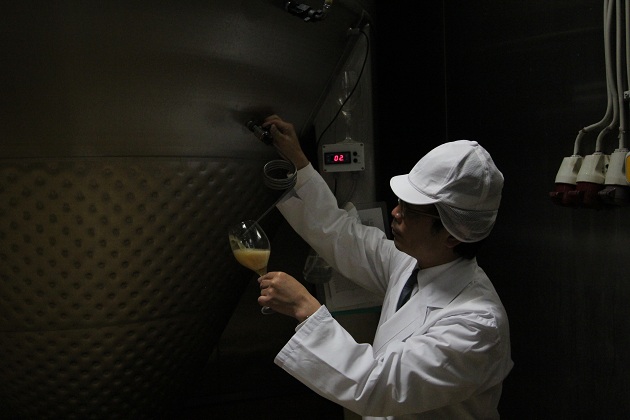
Mr. Asagiri let us taste the freshly brewed beer. I tried Kyara, which was beautiful shiny yellow glow and mellow froth on the top. I couldn't believe how mellow the froth was and even minutes later beautiful white froth was on the glass and didn't disappear at all.
The aroma, the smell of beer was amazing. The smell isn't a scent, but a captivating aroma of the beer that brings you to the world of luxury beer. The experience reminded me of wine tasting. First, you pour the beer to half a glass, enjoy the color of beautiful yellow and then enjoy the aroma. It's not like other beer to quench your thirst, it's a beer to please your taste buds and stimulate the sensation from the smell, color and the taste.
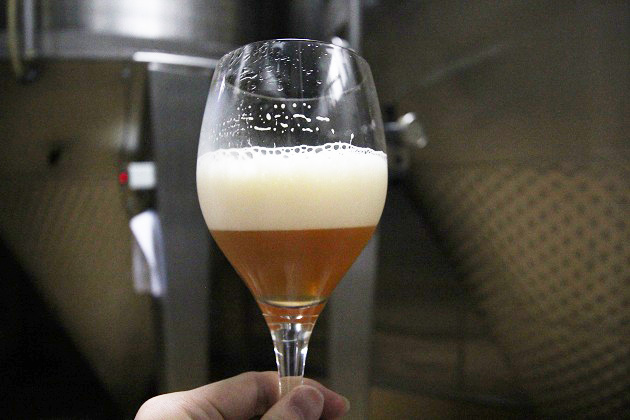
COEDO beer brewer Mr. Yokota and Mr. Kitagawa shared what beer is like to them, they quoted, "I can't hold up my head in front of the beer" which translates to, "I am not able to leave the beer alone". COEDO beer is very sensitive product so I have to look after it with extreme care, hoping they won't get salty and to become good delicious beer. Other brewers said "It's like my baby" it needs consistent care, and the beer itself won't ask me anything so I have to notice their little change to manage their environment in order for them to become the good quality beer.
After the interview one of the brewers shared with me something that he hasn't eaten Nattou (traditional Japanese food, very popular to the Japanese population), to avoid entering the Nattou fungi factory where the soy fermentation takes place. I was surprised with his passion being a proud brewer and professionalism by dedicating his life for crafting quality beer.

